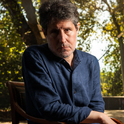Granta Books, £12
Lynsey Hanley, who grew up on the huge Chelmsley Wood estate just outside Birmingham, has written an impassioned personal-cum-political account of the story of public housing in Britain. In the great tradition of working-class autobiography, there is a tone of "this is me, this is who I am" in the authorial voice, along with a touch of chip on shoulder. "It's hard to explain why I feel so strongly about housing in this way," she writes, "other than I know I had a lucky escape where others did not, and that too many people will not know what I mean by that."
Hanley tells us that she started with a hunch that "class is built into the physical landscape of the country." Public housing can indeed be seen as a form of social apartheid that has given rise to what the author calls "the wall in the head" separating the consciousness of people on council estates from the world outside, although what Hanley sees as the stubborn rigidity of the British class system fails to account for the enormous growth of the middle class, the spread of home ownership and her own career progression.
"Estates" is at its best when it harks back to old debates about the post-first world war "Homes Fit for Heroes" campaign, slum clearance and Le Corbusier's vision—to times when housing was a burning issue. Hanley is good on the right-to-buy policy. "The right to housing has been supplanted by the right to buy housing," she notes. She also catches the fatalistic mood of previous generations of council tenants, and commendably avoids the stereotypical presentation of council estates as dens of iniquity.
Yet in 240 pages of a rambling mix of personal reminiscence, earnest social history and anecdote—the fattest man in Britain hails from Hanley's former neighbourhood—there is scarcely a mention of the racial dimension to the story of public housing in Britain. In contrast, Geoff Dench, Kate Gavron and Michael Young's "The New East End" (Profile 2006), attempted through painstaking research and careful argument to look at the pressing issue of white east-enders and families of Bangladeshi origin competing for limited housing stock. Their book is referred to in "Estates" in an endnote, with the comment, "Discussing it in the main text would open a whole new can of worms." Well, why not open it? In the big cities, council estates commonly house people from over 40 different nationalities. Public housing is used to accommodate refugees, asylum seekers and new arrivals from all over the world. On many estates, non-white ethnic minority residents are in the majority. Hanley quotes an estate resident saying that 1981 wasn't a good year to be a council tenant, and this is followed by a reference to the 1985 riot on Broadwater Farm in north London. But there is little discussion of the racial dimension to the affair, and the uprisings that took place on many other estates. For the residents, it was race rather than class that was being built into the landscape.
It would also have been interesting, given her background, to have heard Hanley's view of white working-class racism among council tenants, and the measures taken to evict racists. What of tenants' campaigns? Or the use of CCTV and other security measures, which are transforming some estates into gated communities? This "intimate history" feels remote from these realities.
Perhaps this is because, as she tells us, Hanley now lives far from her original 'hood, in a place that she owns on an estate in east London, an area where right-to-buy council flats are on the market at substantial prices. But the real reason, I think, is that this book belongs to a post-ideological genre of social documentary which mixes factual analysis with diverting literary flaneurie. Social history and the odd graph is mixed with personal memoir and insight, and peppered with references to writers, artists and filmmakers, from George Orwell and Richard Hoggart to Guy Debord, Mathieu Kassovitz and the Pet Shop Boys. Despite the title, "Estates" is only loosely about its subject. And I do not intend that as a put-down.











